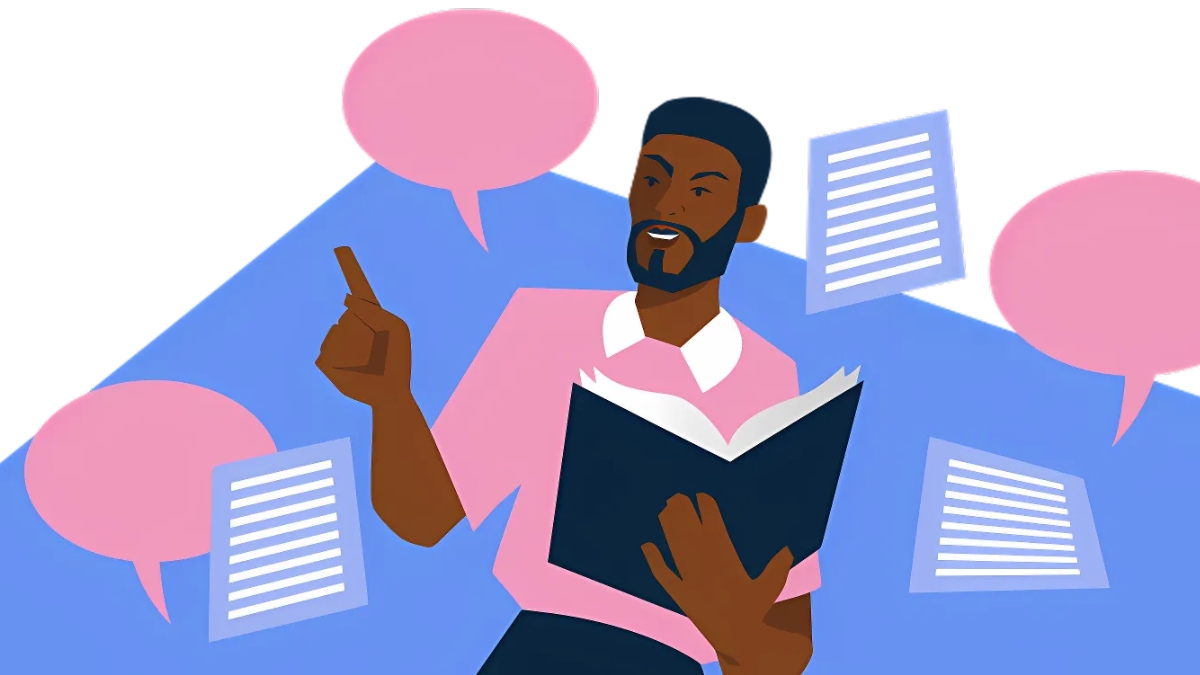
How to Become a Translator in 2025: A Comprehensive Career Guide
Did you know that the translation industry is projected to reach $46.21 billion by 2028? If you’ve ever dreamed of turning your language skills into a rewarding career, now is the perfect time to become a translator! In this comprehensive guide, we’ll walk you through everything you need to know about launching your translation career, from required qualifications to finding your first clients. Whether you’re interested in literary translation, technical documentation, or legal interpretation, we’ll help you navigate the path to becoming a successful professional translator.
Essential Qualifications and Skills for Translators
First things first: language proficiency. You know how some people claim they’re “fluent” because they took a few years of Spanish in high school? Well, translation requires way more than that. I learned this the hard way when I first started translating French technical documents. Even though I had studied French for years and lived in Paris, I still struggled with industry-specific terminology. What you really need is native or near-native proficiency in both your source and target languages. This means understanding idioms, cultural references, and those tricky nuances that machine translation often misses.
Speaking of cultural understanding – this is absolutely crucial, folks! I once made an embarrassing mistake translating a marketing campaign for a US company entering the Japanese market. The slogan I translated was technically correct, but it completely missed the mark culturally. It taught me that you need to deeply understand both cultures you’re working between. This means keeping up with current events, social trends, and even popular culture in both countries.
Let’s talk about specialization because this is where things get really interesting. When I first started, I tried to be a jack-of-all-trades translator. Big mistake! I quickly realized that specializing in technical documentation for the automotive industry was much more profitable and satisfying. Here’s why specialization matters:
- Legal translators need to understand complex legal systems in both countries
- Medical translators must have extensive knowledge of medical terminology and procedures
- Technical translators should understand the technology they’re writing about
- Literary translators need creative writing skills in their target language
Now, let me tell you about the soft skills that nobody talks about but are absolutely essential. Organization is key – I use a detailed spreadsheet system to track all my projects, deadlines, and client preferences. Research skills are crucial too. I spend about 30% of my time researching terminology and context for my translations. And time management? Well, let’s just say I learned to stop accepting rush jobs at 2 AM the hard way!

Technology has completely transformed our field. Gone are the days when you could get by with just a dictionary and Word. Today’s translators need to be comfortable with:
- Computer-Assisted Translation (CAT) tools like SDL Trados or memoQ
- Translation management systems
- Quality assurance tools
- Project management software
- Online research tools and terminology databases
Here’s a pro tip that took me years to figure out: invest time in learning these tools properly. I used to just wing it with the basic features, but once I really learned how to use translation memories and term bases effectively, my productivity doubled.
Remember, becoming a translator isn’t just about ticking boxes on a qualification list. It’s about continuously developing your skills and staying curious about both languages and cultures you work with. I still learn new things every day, and that’s what makes this profession so rewarding!
Education and Certification Paths
First up, let’s talk about academic qualifications. You know, it’s funny – when I first started, I thought my literature degree would be enough because I was “good at languages.” Boy, was I wrong! While you don’t absolutely need a translation-specific degree, having one can definitely fast-track your career. The most valuable programs I’ve seen include:
- Bachelor’s in Translation Studies
- Master’s in Translation and Interpreting
- Dual degrees combining translation with specialized fields (like legal or medical)
- Applied Linguistics degrees with translation focus
But here’s the real deal about professional certifications – they’re often more valuable than degrees in the eyes of many clients. The American Translators Association (ATA) certification is like the gold standard in our field. I remember sweating bullets during my ATA exam! Only about 20% of translators pass it on their first try. I didn’t, and that’s totally okay – it pushed me to improve my skills.
Speaking of certifications, let me break down the main ones you should consider:
- ATA Certification (crucial for freelancers in the US market)
- CITI (Certified International Translator/Interpreter)
- State court certification (if you’re interested in legal translation)
- Industry-specific certifications like medical interpreter certification
Here’s something I wish someone had told me earlier: language proficiency tests are super important, especially for less common language pairs. Tests like the DELF/DALF for French or the JLPT for Japanese can really boost your credibility. I actually lost a major client early in my career because I couldn’t prove my proficiency level in Japanese with a certification.

Continuing education is where things get interesting – and expensive! But trust me, it’s worth every penny. I budget about $2,000 annually for professional development. Some of my favorite resources include:
- ATA webinars and conferences
- Language-specific workshops
- Specialized terminology courses
- Technology training for new CAT tools
Let me tell you about specialized fields, because this is where you can really stand out. I focused on medical translation, which required additional certifications from medical translation organizations. It was intense – I had to learn medical terminology in both languages and understand healthcare systems in different countries. But now, I can command higher rates because of this specialization.
One mistake I see new translators make is thinking education stops after certification. Nothing could be further from the truth! Languages evolve, industries change, and translation tools keep advancing. I still take at least one new course every quarter to stay sharp.
Pro tip: don’t try to get all certifications at once. Start with the ones most relevant to your target market. For example, if you want to work with US agencies, prioritize ATA certification. If you’re targeting international organizations, focus on UN language competitive examinations.
Remember how I mentioned specialization earlier? Each field has its own certification path. For example:
- Legal: Court interpreter certification
- Medical: National Board of Certification for Medical Interpreters
- Technical: Industry-specific certifications
- Literary: Specialized workshops and mentorship programs
The investment in education and certification might seem overwhelming at first. But think of it this way – every certification is a stepping stone to higher-paying clients and more interesting projects. It’s totally worth it in the long run!
Building Your Translation Career
Getting that first translation experience is probably the biggest hurdle. I remember staring at my computer thinking, “How am I supposed to get experience if everyone wants experienced translators?” Here’s what actually worked for me: I started by volunteering for non-profit organizations. Organizations like Translators Without Borders always need help, and guess what? They provide feedback on your work! That feedback is pure gold when you’re starting out.
Building your portfolio is crucial, and I learned this the hard way. I used to just list my language pairs and call it a day. Big mistake! What really works is creating a portfolio that showcases different types of translation work. Here’s my tried-and-tested approach:
- Keep samples from volunteer work (with permission, of course)
- Include excerpts from different domains (technical, marketing, etc.)
- Add case studies describing challenging translation problems you solved
- Include testimonials, even if they’re from volunteer work
Let’s talk about networking, because this totally changed my career trajectory. I used to be super shy about reaching out to other translators – I thought they’d see me as competition. Truth bomb: the translation community is incredibly supportive! Some of my best clients have come through referrals from other translators who were too busy to take on more work.
Finding those first paid gigs can be tricky. I started on ProZ.com, but I’ll be honest – the rates weren’t great at first. However, it gave me real-world experience with deadlines and client communication. Here are some places to look for entry-level work:
- Translation agency internships (I did one with a local agency)
- LinkedIn jobs (set up alerts for “junior translator”)
- Professional association job boards
- Local businesses needing translation services
Now, let’s tackle the awkward money conversation – setting rates. When I first started, I literally had no idea what to charge. I ended up charging way too little ($0.03 per word – yikes!) and burned out trying to make ends meet. Here’s what I wish I’d known: start at the lower end of professional rates (around $0.08-0.10 per word for common language pairs) but don’t go below industry minimums. Raise your rates gradually as you gain experience.

Client relationships are everything in this business. I learned one super valuable lesson early on: clear communication beats perfect translation every time. My best client relationships started with honest conversations about:
- Project timelines and realistic deadlines
- Expected quality levels and revision processes
- Communication preferences (some clients want daily updates, others just want the final product)
- Payment terms and project scope
Here’s a pro tip about managing clients: document everything! I created a simple client profile template where I note their style preferences, special requirements, and even their preferred forms of address. This attention to detail has helped me retain clients for years.
The biggest game-changer for my career was joining professional associations. Yes, they can be expensive, but the networking opportunities and professional development resources are invaluable. Plus, many clients specifically look for translators through these associations.
Remember, everyone starts somewhere. I went from volunteering to having a full client roster within 18 months by following this path. The key is to be patient but persistent, and always focus on delivering quality work – even when the pay isn’t great at first.
Translation Tools and Technologies
Let’s dive into CAT tools first. I remember feeling completely overwhelmed when I first opened SDL Trados (one of the leading CAT tools). All those segments, translation memories, and term bases – it felt like learning a new language itself! But here’s the thing: these tools are absolute game-changers once you get the hang of them. The main ones you’ll encounter are:
- SDL Trados Studio (industry standard, but pricey)
- memoQ (my personal favorite for its user-friendly interface)
- Memsource (great for cloud-based collaboration)
- Wordfast (good budget option for beginners)
Machine translation post-editing (MTPE) is where things get really interesting. I used to be totally against machine translation – thought it would replace human translators. But here’s what I’ve learned: MT is just another tool in our arsenal. The key is knowing how to edit machine-translated content effectively. I now spend about 40% of my time on MTPE projects, and they can be quite profitable if you know what you’re doing.
A quick MTPE tip that saved me hours: always read the source text first before looking at the machine translation. This helps prevent being influenced by awkward MT phrasing.
Project management was my biggest weakness when I started. I’d accept jobs without properly tracking deadlines and ended up working some crazy late nights! Now I use:
- Trello for project tracking (color-coded cards for different clients)
- Toggl for time tracking (essential for pricing future projects)
- Google Calendar for deadline management
- FreeAgent for invoicing and expense tracking

Quality assurance tools literally saved my career once when they caught a major number inconsistency in a legal translation. My favorite QA tools include:
- Xbench (fantastic for terminology consistency)
- QA Distiller (great for technical translations)
- Built-in CAT tool QA features (don’t overlook these!)
Let’s talk about translation memories (TM) because they’re absolute gold! I spent years building my specialized technical TM, and it now saves me hours of work. Here’s what I wish I’d known earlier:
- Clean your TMs regularly (bad segments will haunt you forever)
- Create separate TMs for different clients and domains
- Export and backup your TMs monthly (learned this after a computer crash)
- Share TMs with trusted colleagues for mutual benefit
The most surprising thing I’ve learned about translation technology? It’s constantly evolving. Just when I think I’ve mastered a tool, a new feature or update comes along. I now set aside time every month to learn about new tools and features.
One mistake I see new translators make is trying to learn every tool at once. Don’t do that! Start with one CAT tool and master it. Then gradually expand your toolkit based on client requirements and your specialization needs.
A real game-changer for me was learning keyboard shortcuts in my CAT tools. It seems simple, but it increased my productivity by about 30%. I have a little cheat sheet taped to my monitor – no shame in that!
Specialization Options in Translation
Let’s break down the main specializations. Technical translation was my first love – I started translating user manuals for industrial equipment. Not the most glamorous, right? But here’s the thing: technical translation is incredibly stable and well-paid. I consistently earned $0.15-0.20 per word because there’s always demand for translators who understand both the language and technical concepts. You’ll need:
- Engineering or technical background (formal or self-taught)
- Terminology management skills
- Familiarity with technical writing standards
- CAT tool proficiency
Medical translation is another heavy hitter in terms of earning potential. I dabbled in this field for a while, and the rates were fantastic ($0.20-0.25 per word), but the responsibility is huge. One small mistake could literally impact someone’s health. A colleague of mine specializes in translating clinical trials and medical device documentation. She told me she spent about $5,000 on specialized training and certifications, but she made that back within months.
Legal translation was the most challenging specialty I tried. Let me tell you about my first legal contract translation – I spent hours researching terminology and legal systems! The pay is excellent ($0.20-0.30 per word), but the stress level matches. You absolutely need:
- Legal background or extensive training
- Court interpreter certification (in many cases)
- Understanding of different legal systems
- Impeccable attention to detail
Now, literary translation – that’s a whole different ballgame. I translated a short story collection once, and it was incredibly fulfilling creatively, but financially? Well, let’s just say you shouldn’t quit your day job right away. Literary translators often earn by project rather than word count, and rates vary wildly. However, if you build a reputation, you can make a good living, especially combining literary work with other types of translation.

Here’s something interesting about market demand: I’ve noticed that technical and medical translations have been consistently in high demand, regardless of economic conditions. During the pandemic, medical translation exploded, while marketing translation temporarily declined.
Let me share a quick case study. A colleague of mine specialized in pharmaceutical translation, focusing specifically on clinical trial documentation. She started with basic medical translation certification ($800) and then took specialized courses in pharmaceutical terminology ($1,200). Within two years, she had a waiting list of clients and could charge premium rates because she’d found such a specific niche.
Choosing your specialization isn’t just about the money though. Here’s my advice for picking the right one:
- Look at your background – what specialized knowledge do you already have?
- Consider your interests – you’ll be reading about these topics constantly
- Research market demand in your language pair
- Calculate the investment needed for certifications and training
- Talk to specialized translators (most are happy to share advice!)
The biggest mistake I see? People choosing a specialization just because it pays well. I tried financial translation because of the high rates, but I found it mind-numbingly boring. If you don’t enjoy the content you’re translating, no amount of money makes it worthwhile.
Launching a Freelance Translation Business
Setting up your business structure is crucial, but it doesn’t have to be scary. I initially overcomplicated things, thinking I needed a complex business structure right away. The reality? Most translators start as sole proprietors. I eventually formed an LLC for liability protection, but only after I had steady income. Here’s what you actually need to start:
- Business bank account (separate from personal)
- Basic accounting system (I started with Excel, now use QuickBooks)
- Professional email address (not your old hotmail account!)
- Simple website (mine started as a one-page portfolio)
Marketing was my biggest challenge – I’m a translator, not a salesperson! But I learned that authentic marketing works best in our field. My most successful strategies have been:
- Creating detailed profiles on ProZ and TranslatorsCafe
- Being active in LinkedIn groups for my specialization
- Writing blog posts about translation challenges in my field
- Attending industry conferences (virtual and in-person)
Let me tell you about my first attempt at cold emailing potential clients – total disaster! I sent generic emails to 100 companies and got zero responses. Then I changed my approach: researched 10 companies thoroughly, personalized each pitch, and landed three clients. Quality over quantity, folks!
The business management side caught me off guard. Nobody tells you how much time you’ll spend on non-translation tasks. I now schedule specific times for:
- Invoicing and payment follow-up (every Monday morning)
- Email management (twice daily, not constantly!)
- Project scheduling and deadline tracking
- Professional development and learning
Building an online presence was a game-changer for my business. But here’s the thing – you don’t need to be everywhere. Focus on where your clients are. I wasted months trying to build a Twitter following before realizing my technical translation clients weren’t even on Twitter! What really worked:
- A professional website with clear services and specializations
- Regular LinkedIn updates about my work (without breaking confidentiality)
- Portfolio samples in my specialty areas
- Client testimonials and case studies

Let’s talk money – because that’s what keeps your business running! I made some rookie mistakes with financial planning. Did you know many European clients pay after 60 days? I learned about cash flow management the hard way. Now I:
- Keep 3 months of expenses as a buffer
- Save 30% for taxes (adjust based on your location)
- Track all business expenses meticulously
- Set aside money for professional development
Here’s a pro tip about pricing: start with standard market rates, not bargain rates. I initially thought low prices would attract clients, but it attracted the wrong ones. When I raised my rates, I actually got better clients who valued quality work.
The most important lesson? Systems save you! Create templates for:
- Project quotes and proposals
- Client onboarding documents
- Invoice formats
- Email responses to common queries
- Project checklists
A surprising challenge was learning to say “no” to projects. Every job seems tempting when you’re starting out, but taking on the wrong projects can damage your reputation and burn you out. I now have a clear checklist for evaluating potential projects.
Master the art of email marketing with Email Marketing Expert EBooks! These guides provide step-by-step strategies for crafting compelling emails, growing your subscriber list, and boosting open and click-through rates. Learn how to design automated campaigns, segment audiences, and drive conversions effectively. Perfect for marketers and entrepreneurs aiming to maximize their email marketing success. Start building powerful email campaigns today!
Embarking on a career as a translator opens up endless possibilities in our increasingly connected world. By following this guide and continuously developing your skills, you’ll be well-equipped to build a successful translation career in 2024 and beyond. Remember, the key to success lies in combining strong language skills with professional certifications, practical experience, and business acumen. Ready to take the first step? Start by assessing your current language skills and exploring certification options that align with your career goals!





